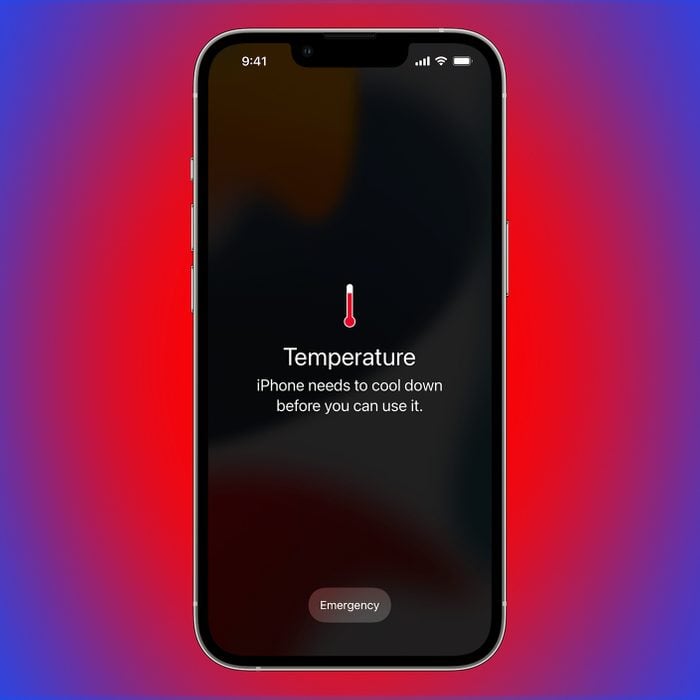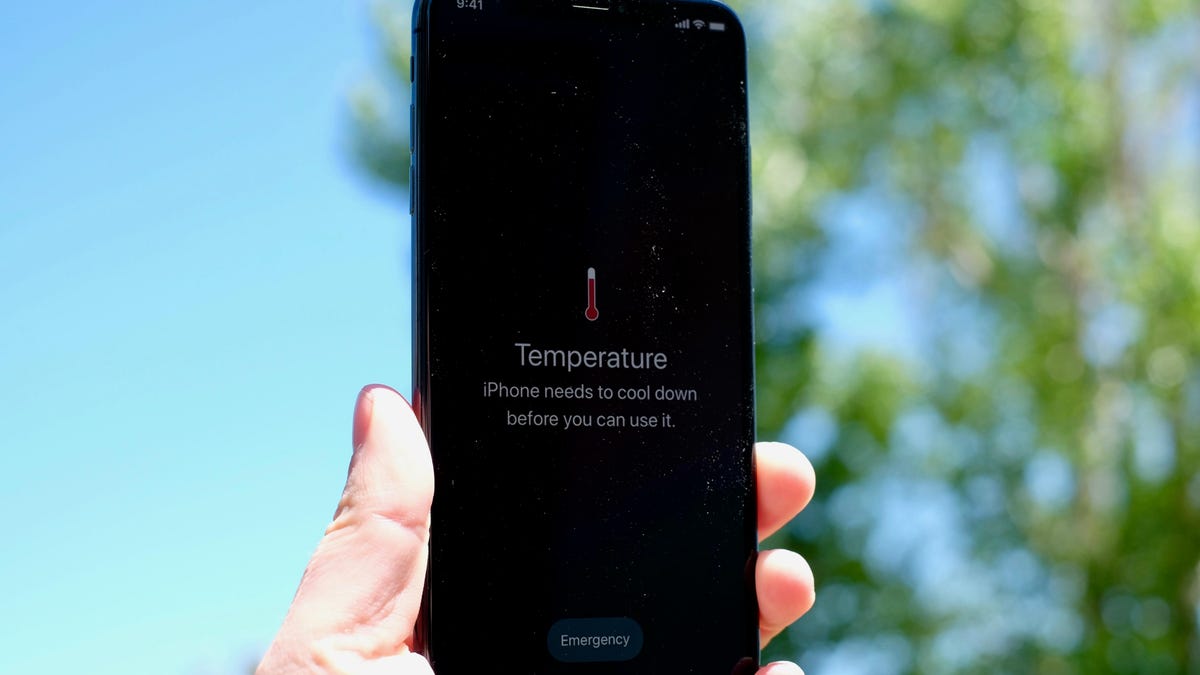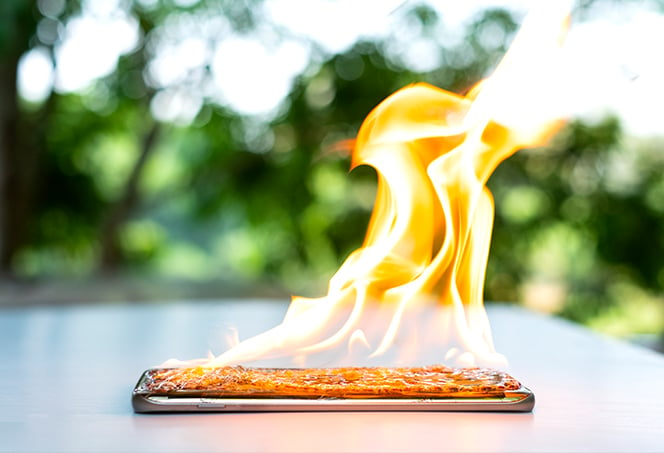To check the iPhone’s temperature, use third-party apps as iPhones do not have a built-in feature for temperature measurement. It’s possible to monitor your iPhone’s temperature through the Apple Health app by syncing it with a smart thermometer like Kinsa’s QuickCare.
In today’s tech-savvy world, keeping tabs on our devices’ temperature is essential for optimal performance and longevity. IPhones, being a popular choice among consumers, often face issues related to overheating. While iPhones lack a built-in temperature sensor, several methods, including third-party apps and external devices, can effectively monitor the device’s temperature.
This article delves into the strategies and tools available to ensure your iPhone stays within its ideal temperature range and performs at its best.

Credit: www.rd.com
Understanding Iphone Temperature Monitoring
To monitor the temperature of your iPhone, you can sync it with a smart thermometer like Kinsa’s QuickCare and use the Apple Health app to measure and track body temperature. IPhones lack a built-in temperature sensor, so they don’t directly measure environmental temperatures.
However, if the device overheats, certain changes might occur, such as slowing or stopping of charging, dimming or blacking out of the display, and disabled camera flash.
| No, iPhones do not have a built-in feature to measure room or outdoor temperatures directly. |
| You can sync your iPhone with a smart thermometer like Kinsa’s QuickCare to measure and monitor your body temperature. |
| If the interior temperature of your device exceeds the normal operating range, some changes might occur: |
| – Charging, including wireless charging, slows or stops. |
| – The display dims or goes black. |
| – Mobile radios enter a low-power state. |
| – The camera flash is temporarily disabled. |
Signs Of High Iphone Temperature
High iPhone temperature can lead to various issues including charging and display abnormalities and camera and connectivity issues. If your iPhone is overheating, you may notice slower or interrupted charging, dimming or black display, and temporary camera flash disablement. Additionally, you might experience connectivity problems such as weakened mobile radio signals. It’s important to monitor your iPhone’s temperature regularly to prevent any potential damage to the device. Make sure to keep your iPhone in a cool environment and avoid using it excessively for prolonged periods.
Potential Causes Of Iphone Overheating
When it comes to potential causes of iPhone overheating, poor signal strength and intensive data usage can lead to excessive heat generation. In locations with weak signals, the iPhone expends more energy to maintain a connection, resulting in increased heat production. Likewise, continuous data-intensive activities such as video streaming or large file downloads can overburden the device, causing it to overheat. It’s important to monitor the phone’s temperature regularly and optimize signal reception and data usage to mitigate overheating issues.

Credit: www.cnet.com
Checking Iphone Temperature
When it comes to checking the temperature of an iPhone, there are a few options available. One way is to use third-party apps specifically designed for this purpose. These apps can provide real-time temperature readings of your iPhone’s internal components. Some popular options include Kinsa’s QuickCare, which can sync with your iPhone and measure your body temperature through the Apple Health app.
It’s important to note that iPhones do not come with a built-in feature to measure room or outdoor temperatures directly. However, if you notice any signs of overheating, such as charging slowing down, display dimming, or camera flash disabled, it’s a good indication that your device’s interior temperature may be exceeding the normal operating range.
In conclusion, while an iPhone itself doesn’t have a built-in thermometer, using third-party apps can help monitor your device’s temperature and ensure it stays within a safe range.
Preventive Measures For Iphone Overheating
To prevent iPhone overheating, regularly check the phone’s temperature using built-in diagnostics or third-party apps. Avoid direct sunlight or excessive usage to maintain optimal performance. Keeping the device cool can prevent damage and ensure a smooth user experience.
Preventive Measures for iPhone Overheating Optimizing Data Usage: – Limit background app refresh and app notifications to reduce data consumption. – Disable automatic downloads for app updates and media files. – Use Wi-Fi whenever possible instead of cellular data. – Clear cache and cookies regularly to free up storage space. – Close unused apps running in the background to conserve battery life. – Turn off Wi-Fi and Bluetooth when not in use to prevent unnecessary battery drain. Checking External Factors: – Avoid exposing your iPhone to extreme temperatures, both hot and cold. – Keep your iPhone out of direct sunlight to prevent overheating. – Remove any protective cases or covers that may trap heat. – Avoid using your iPhone while it’s plugged in and charging. – Monitor your iPhone’s battery health and replace it if necessary. – Consider using a cooling pad or fan to keep your iPhone temperature down during heavy usage. By following these preventive measures, you can help prevent your iPhone from overheating and ensure optimal performance.
Credit: www.avg.com
Frequently Asked Questions Of How To Check Phone Temperature Iphone
Does Iphone Have A Temperature Sensor?
No, iPhones do not have a built-in temperature sensor for measuring room or outdoor temperatures.
How Do I Check If My Iphone Is Overheating?
To check if your iPhone is overheating, look for these signs: slowing or stopping of charging, dimming or blackening of the display, low power for mobile radios, and temporary disabling of the camera flash. If your iPhone feels warm to the touch, it may be overheating.
Can My Iphone Tell If I Have A Fever?
No, the iPhone does not have a built-in feature to measure room or outdoor temperatures. However, you can monitor your body temperature by syncing your iPhone with a smart thermometer and using the Apple Health app.
Why Is The Back Of My Iphone Hot?
Your iPhone back may feel hot due to poor signal or heavy data usage such as streaming videos or downloading large files. IPhones do not have a built-in temperature sensor, but third-party apps can help monitor temperature.
Conclusion
Checking your iPhone’s temperature is important for preventing overheating and potential damage. By following simple steps and using third-party apps, you can easily monitor your device’s temperature to ensure it stays within the safe range. Be mindful of your phone’s usage, especially during intensive tasks, to avoid any overheating issues.
Regular temperature checks can help maintain your iPhone’s performance and longevity.